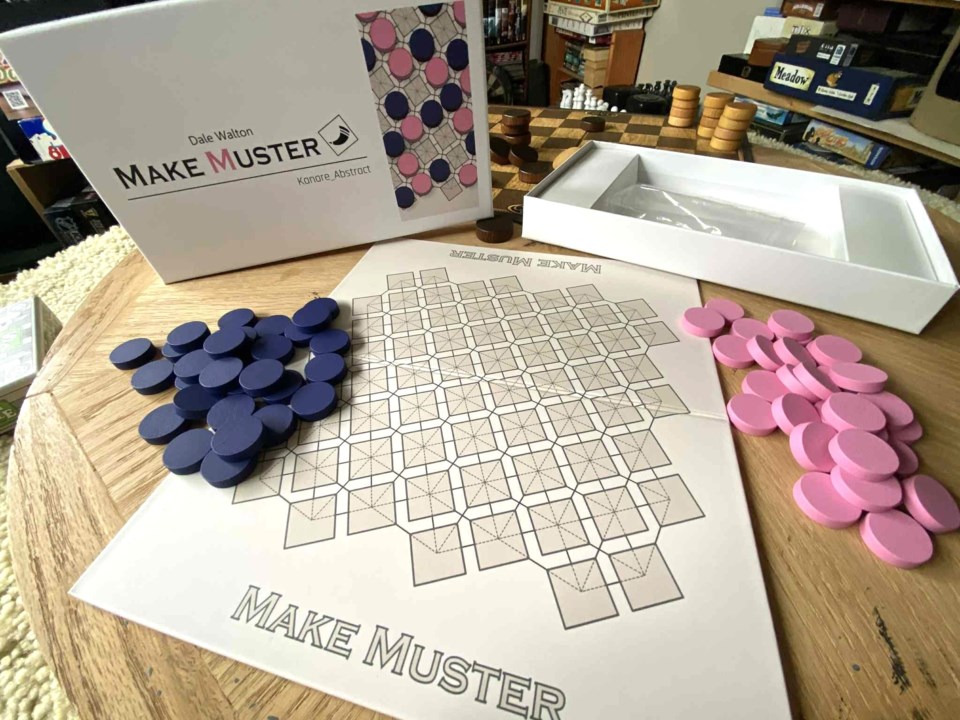YORKTON - This week we look at Make Muster from designer Dale Walton.
The game is the fourth in a ‘sort of set’ from Kanare_Abstracts; the previous ones reviewed here being Trike, Slyde and heXentafl.
Make Muster is a bit of an interesting one for The Meeple Guild. The game had been available at one point as a print ‘n play, and we had given it an afternoon over brews in that format.
The Kanare_Abstracts version of course is much nicer, from the great box to the wooden play pieces, to a reversible board that allows for shorter or longer play depending on choice.
The aesthetics of all four of the game in the ‘set’ are great, and ditto component quality.
Make Muster has the feel of being a little bit like checkers when playing the variant rules on the smaller board, and more Lines of Action using the larger board and full rules.
So in Make Muster the two players lay out their pieces, always surrounded by open spots until the board is filled, and then begin to move the pieces so that all are connected in a single connected group.
The twist is when a spot opens that would allow legal placement of a piece you must do so. It tends to put a kink in your connection efforts, and while we appreciated the idea as rather unique, it would not be a rule we would suggest added ‘fun’ to Make Muster.
Walton said via email that placements are an element to be aware of to be successful.
“One thing to expect is that the game does require attention and developing a habit of keeping track of which moves will cause forced placements - one doesn’t need to scan the whole board for openings on each move because the openings will occur next to the previous locations of the last couple of moves, but one does need to stay alert,” he said.
That said the collection of pieces into a single group was the founding premise of the game.
“The idea was the unification goal,” said Walton, adding, “the variant was the original game, but for a strategy game of a reasonable size, the set up would have become onerous. I had the idea of creating a placement rule that didn’t force a hard break of the game into phases. . .
“In general, I try to create tactical games that require a player to be alert to possibilities - like chess, with its forks and discovered checks and so on. But, not to the point that overall strategy becomes irrelevant or obscure.”
Walton also noted, “this is a race, so efficiency is important: how many pieces will I need to achieve unification the fastest. How will I enter them, or avoid entering them, force my opponent to enter extra or keep him from entering enough? Should I try to be first to move, or will that mean my opponent can slow my progress later, or should I place in the edges to get more material on the board in the beginning, but risk getting trapped there ... Also that there is an interplay between the two goals. Unification and preventing the opponent’s unification.
“For experienced players the main goal is unification - but the threat of traps is an important element.”
Overall, from The Meeple Guild perspective, Make Muster didn’t quite catch our attention in a significant way. There is no glaring flaw, however, neither was there any ‘wow’ factor.
If you were ordering the other games in the ‘kanare’ quartet, sure grab this one too, but it is the weakest in our minds.
You can find Make Muster at kanare-abstract.com






